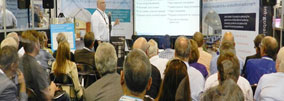The numbers are in - exceed the building code and reap the rewards
While building codes provide a safeguard against poor performance and shoddy work, they are not designed to reward designers for going the extra yard for better performing buildings.
While it’s acknowledged that higher performing buildings may cost a little more (in some cases they cost the same or less), long term analysis such as total cost of ownership (or NPV) provides a better picture of the real cost of a building.
Operational, maintenance, finance costs plus interest and inflation rates can all be modelled to demonstrate a financial benefit of investing in better building performance. Then there’s intangibles such as how a well-designed and built home or office can improve mood and productivity.
Good thermal comfort and low energy appliances will certainly save you money off your energy bill; but other design features such as natural daylight, noise control and fresh air supply can also deliver further benefits to a building’s feel and its efficiency.
At CSR, we encourage clients, owners and occupants to research these long-term tangible (and intangible) benefits in operational cost, general comfort, health and resale value of higher performance buildings, so more demand will be placed on designers and builders to go beyond the building code to deliver better performance.
Owners and tenants should not rely on building codes to deliver performance. The codes define minimum compliance benchmarks which are easily surpassed through smart choices made during the design and specification stage. Once a building is complete it’s practically impossible and/or too expensive to retrofit to achieve the same results.
Regardless of any possible future proposal to improve building codes, CSR’s research has identified some simple steps to exceed building code requirements and improve the performance of any building to make it healthier, more comfortable and efficient to operate. These steps include:
Design and Orientation
Solar aspect and natural shading should deliver year round performance. An architect or building designer can be engaged to maximise this and many standard home designs available today are also designed to provide flexibility in orientation and layout.
Use of the Building and Lifestyle
How a building is used and operated has a huge influence on the performance, the hours of operation and the intended function for the building will help determine what systems and materials should be used.
Thermal Comfort
Residential thermal comfort is predicted using the NatHERS Star ratings – in most states 6 Star is the minimum standard (BASIX in NSW averages between 4.5 to 5 Star). Many consumers don’t understand that up to a 10 Star rating is achievable and can dramatically reduce the energy required to maintain thermal comfort.
Likewise for a commercial building, Section J of the BCA defines the minimum specification for glazing and insulation. Increasing insulation, glazing, shading and ventilation performance will deliver huge benefits to owners and occupants.
Ventilation and Air Control
Improving air control across the building envelope enables occupants to take control over ventilation. If you want to shut out the heat, your building should allow you to, rather than the hot summer air penetrating any cracks in construction.
Window sizing and placement plus suitable ventilation appliances give control to the occupants. In many commercial buildings windows are not operable so ventilation is managed by mechanical services, smart active controls aid in providing well ventilated offices.
Moisture
Moisture sources in a building include kitchens, laundries, bathrooms, weather – and people.
Ensure your building design and construction provides air control while allowing suitable drying mechanisms. Double glazing also reduces the risk of condensation related moisture issues.
Noise Control
With our research work at CSR House we found that air control and material selection provide an incredible level of noise reduction. Insulation, glazing and substrate selection when coupled with air tightness measures all combine to reduce noise transfer.
Natural Light
Access to natural light aids occupant comfort and wellbeing while creating an appealing space connecting occupants to the local environment.
Modern glazing and window technology provides up to three times more daylight penetration for equivalent thermal performance compared to traditional clear, uncoated single glazed windows.
Heating and Cooling Systems
Operation and ventilation control strategies drive system efficiencies and can deliver huge benefits to occupant comfort and building performance.
In housing heating and cooling systems are typically sized according to industry accepted rules of thumb, ignoring thermal comfort performance. A home with a higher star rating that has air control measures will have a lower load and therefore require less heating and cooling.
Smaller systems cost less to install and use less energy in operation.
In commercial buildings the HVAC system should be sized appropriately, however tuning of the HVAC control systems can reap great rewards in occupant comfort and energy use.
Energy Efficiency
Once you’ve upgraded your building and selected an appropriately sized heating and cooling system, you’ve then taken a major leap forward in energy use compared to Building Code compliance.
Other areas of energy efficiency gains can be found in:
- Lighting
- Water heating
- Appliances
When energy demand in a building is reduced, alternate energy sources become more cost effective. Building operation then becomes important. For instance, if a building’s use is mainly during night time, there’s little point in installing a solar PV system unless batteries are used. Likewise, energy supply matched to usage profiles help optimise energy supply and reduce risk of overcapitalisation.
When the decision is made on a project to exceed the building codes the results can be amazing. At CSR we say let’s we raise the bar – even just a bit – so everyone can experience some level of amazing?



